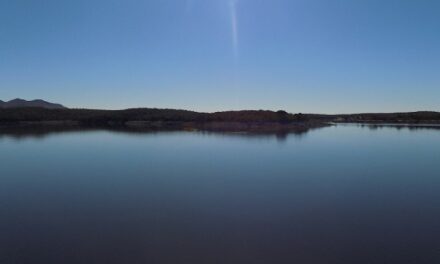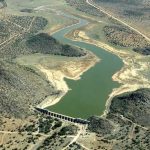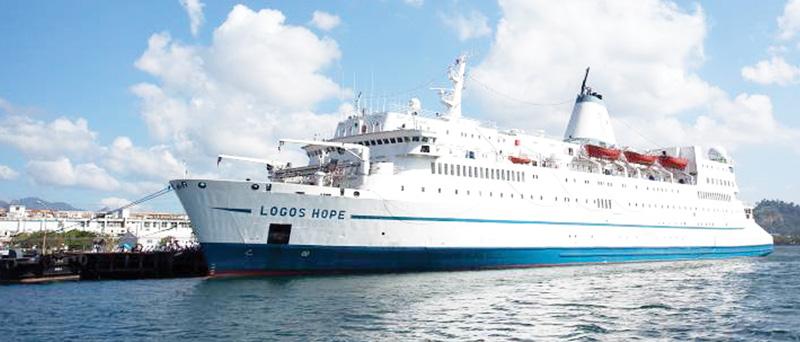
Letter to the Editor on Uranium

From Gunter Wippel.
Earlier this year, on 29 January, an article appeared in The Economist, Namibia, titled: “Uranium One looks to contributing to the long-term prosperity and sustainable development of the country.” [1]
The matter of the fact is: Uranium mining does not contribute to long-term prosperity.
Take a look at Niger.
40 years ago, Niger was one of the least-developed, poorest countries in the world. Since 1971 – [some] 53 years – French state-owned company COGEMA, later renamed AREVA, now named ORANO, exploited two uranium mines in Niger. 53 years later, Niger is still ranging among the 5 least-developed countries in the world [2] despite thousands of tons of uranium taken out of its ground.
In 2021, one of AREVA’s / ORANO’s mines in Niger, Akouta was closed down due to the deposit being mined out. Several hundred workers were laid off, with no alternative jobs in sight. The company leaves behind 20 million tons of radioactive waste. Reclamation activities have been started [but] they will take at least a decade.
Additional Information
“Mine closure huge blow to workers“, 11 November, 2019 (loss of 1472 jobs)
www.industriall-union.org/mine-closure-huge-blow-to-workers
“Our houses are crumbling’: Closed uranium mine leaves Niger workers out in cold”
Issued on: 03/11/2022 – 14:09 Modified: 03/11/2022 – 14:23
www.france24.com/en/video/20221103-our-houses-are-crumbling-closed-uranium-mine-leaves-niger-workers-out-in-cold[3]
Niger uranium mine closure: hundreds of jobs cut, concerns for environment
RFI – Radio France International 15/03/2021 – 19:00
www.rfi.fr/en/africa/20210315-niger-uranium-mine-closure-arlit-cominak-hundreds-of-jobs-cut-concerns-for-environment-africa-economy-orano
Uranium mining like many mining operations, is a boom-and-bust endeavour: a short boom is followed by a crash, at latest when the deposit is mined out.
In Canada’s North, uranium mining started in 1952. By 1960, a town was built, named Uranium City, a boom town with some 4000 inhabitants at its best times. In 1982 the price of uranium dropped due to the exposure of a uranium price cartel. The mines in Uranium City area closed down at short notice. 4000 people lost their jobs and left the town nearly over night.[4] Ever since, the town is a derelict place, with buildings falling apart.
The radioactive leftovers continued to contaminate the environment for the next 40 years. Reclamation work of the leftovers from mining was not started until 35+ years later. No permanent prosperity was achieved. Other uranium mining town suffered similar experiences.
Additional Information
Nuclear Avenue: “Cyclonic Development”, Abandonment, and Relations in Uranium City, Canada
https://www.mdpi.com/2076-0787/7/1/5 (Although this a lengthy 30 of 20 pages – including a number of photos – it shows the boom-and-bust-cycle or uranium mining very well – and what is left behind.)
“Nuclear wasteland: The explosive boom and long, painful bust of American uranium mining”
https://www.cnbc.com/2018/08/04/the-miners-that-fuel-americas-nuclear-power-and-atomic-arsenal-are-di.html
Jeffrey City, WY: A mining boomtown gone bust Updated October 20, 2021
https://extension.sdstate.edu/jeffrey-city-wy-mining-boomtown-gone-bust
Boom! Bust! (from High County News)
Forty-five years of High Country News boom and bust cover stories, March 17, 2015
https://www.hcn.org/articles/boom-bust
Southern Utah’s Boom and Bust Uranium Industry (from History To Go), May 5, 2016
https://historytogo.utah.gov/southern-utahs-uranium-industry/
Take a look at another African country: Malawi.
Kayalekera Mine in Malawi:
Started in a hurry in 2007, with miners underpaid and clashing with police, as well as some deadly accidents, the mine started producing uranium by 2009. The price of uranium, however, had started to drop, and by 2014, production was stopped. Over the next years, the company, Paladin, barely evaded bankruptcy, and finally sold the mine.
Besides, the mine had assembled a bad track record over the years, including trouble with workers around payment, lack of workplace safety (a number of workers were killed by accidents), clashes with NGOs, as well as with local residents who complained about radioactive water seeping from the tailings into a local creek (https://www.wise-uranium.org/umopafr.html#KAYELEKERA)
There was no reclamation work done. The problem of tailings, unsecured, remains. The mine was sold to another company, but sits idle to date. Workers lost their jobs, there was no compensations. No prosperity, definitely no long-term prosperity, evolved from uranium mining in Malawi. The problems caused by uranium exploitation, however, remain.
A study by the US Geological Service stated that at none of the ISL mines the water quality has been restored to its original quality.
“Regarding the original question of whether or not groundwater has been restored to baseline in Texas uranium ISR well fields, it was observed that no well field for which final sample results were found in TCEQ records returned every element to baseline.” [5]
ROSATOM claims on its website: ”When using ISR the surface remains almost intact, there is no tailings or waste rock and the groundwater condition restores to its initial state.” [6] ROSATOM’s unverified statement is in stark contradiction to the scientifically proven findings of the US Geological Service quoted above. [7]
In 2020, Uranium One featured on its website “The Key Motivation for Investigating ISL”: Lower CAPEX and OPEX i.e. lower capital expenditure – it takes less investment, less money to be put up-front to start an ISL mine, and less OPEX – less operational expenditure – less costs to run the operation, in simple words: Mining by ISL is cheaper than underground or open-pit mining.
Lower investment and lower operational costs are the real reasons behind the hype around ISL mining, not because it’s more ‘environmentally friendly’.
Conclusion
Uranium mining does not contribute to long-term prosperity or sustainable development of a region or a country – not in Canada, not in the USA, not in Niger, not in Malawi.
Mining does not bring sustainable economic or social development. Once the deposits are mined out, the boom will go bust, with no alternatives for the workers and the local people.
Australian Aboriginal women Yvonne Margarula, after many years of struggling with uranium mining companies stated: “The promises never last – the problems always do.”
[Source References]
[2] https://hdr.undp.org/data-center/country-insights#/ranks
[4] https://en.wikipedia.org/wiki/Uranium_City
[5] “Groundwater Restoration at Uranium In-Situ Recovery Mines, South Texas Coastal Plain”, US Geological Service, 2009, page 21, https://pubs.usgs.gov/of/2009/1143/pdf/OF09-1143.pdf
[6] https://rosatom.ru/en/rosatom-group/uranium-mining/
[7] Note that this is not a controversy of Russia against the US, it is an unverified statement on a company website versus the findings of a scientific institution, the Geological Service of the United States.
Gunter Wippel, uranium-network.org, Germany
Contact: [email protected]















































